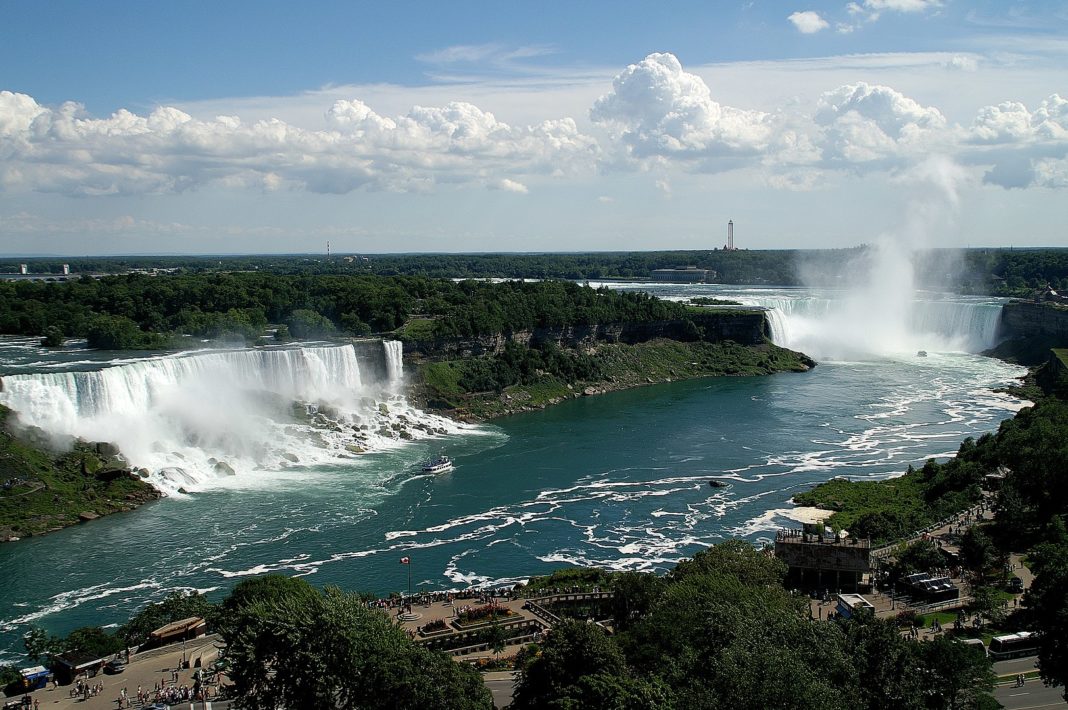The largest of the three is Horseshoe Falls, which straddles the international border of the two countries. It is also known as the Canadian Falls. The smaller American Falls and Bridal Veil Falls lie within the United States.
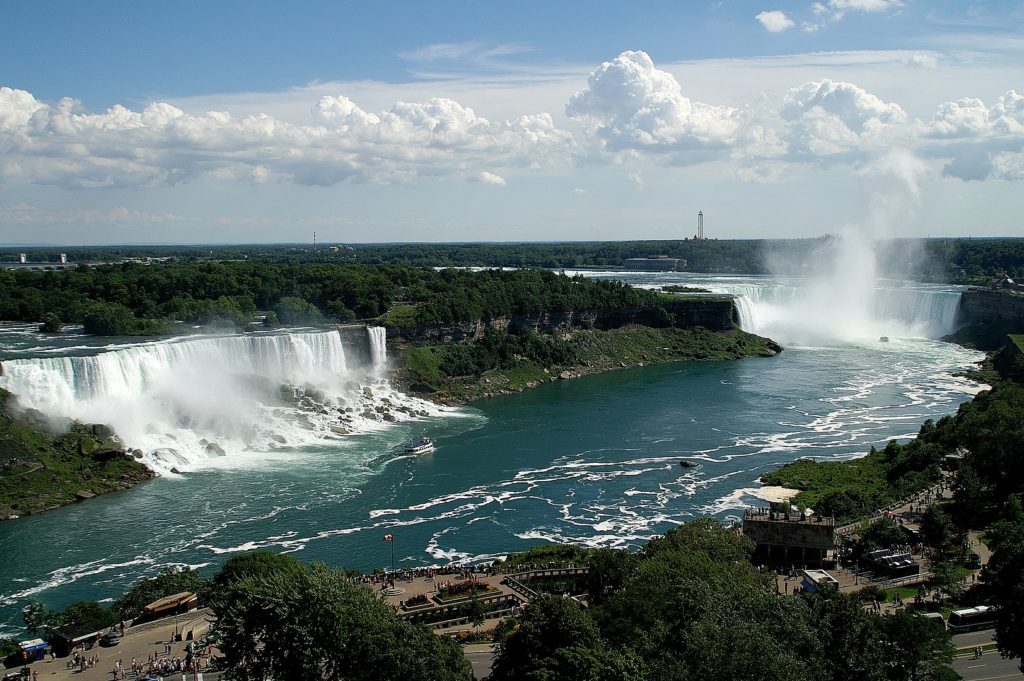
Niagara Falls is 27 km northwest of Buffalo, New York, and 69 km southeast of Toronto, between the twin cities of Niagara Falls, Ontario, and Niagara Falls, New York. Niagara Falls was formed when glaciers receded at the end of the Wisconsin glaciation (the last ice age), and water from the newly formed Great Lakes carved a path over and through the Niagara Escarpment en route to the Atlantic Ocean.
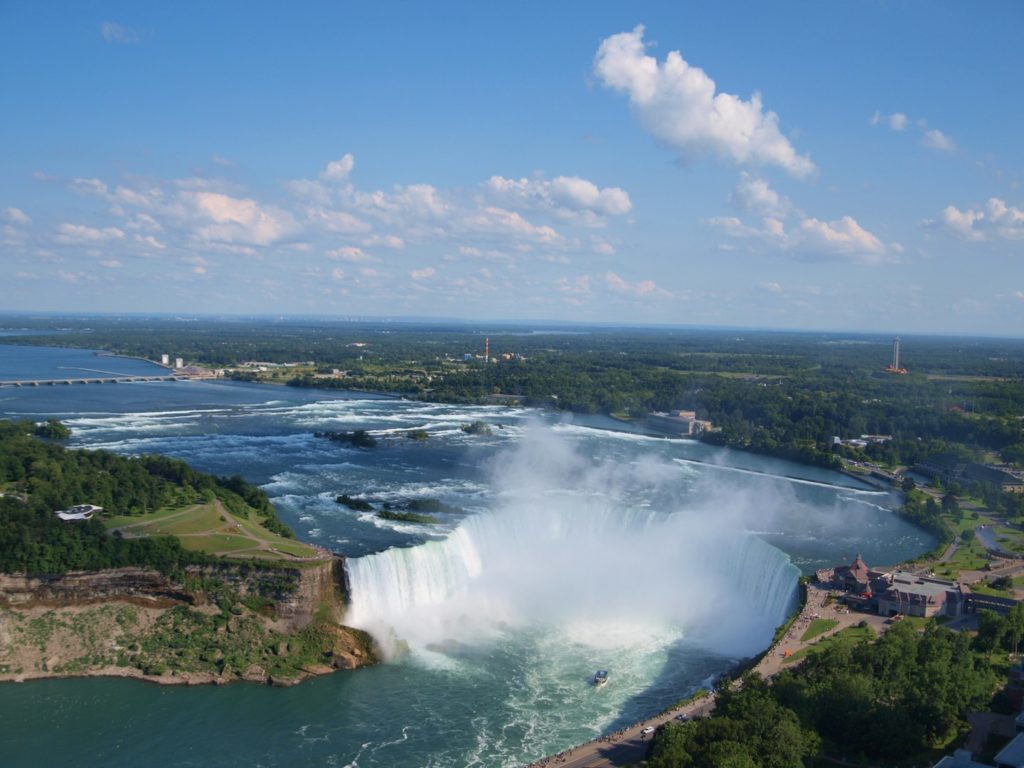
Formed by the Niagara River, which drains Lake Erie into Lake Ontario, the combined falls have the highest flow rate of any waterfall in North America that has a vertical drop of more than 50 m (160 ft). During peak daytime tourist hours, more than 168,000 m3 of water goes over the crest of the falls every minute. Horseshoe Falls is the most powerful waterfall in North America, as measured by flow rate. Niagara Falls is famed for its beauty and is a valuable source of hydroelectric power. Balancing recreational, commercial, and industrial uses have been a challenge for the stewards of the falls since the 19th century.
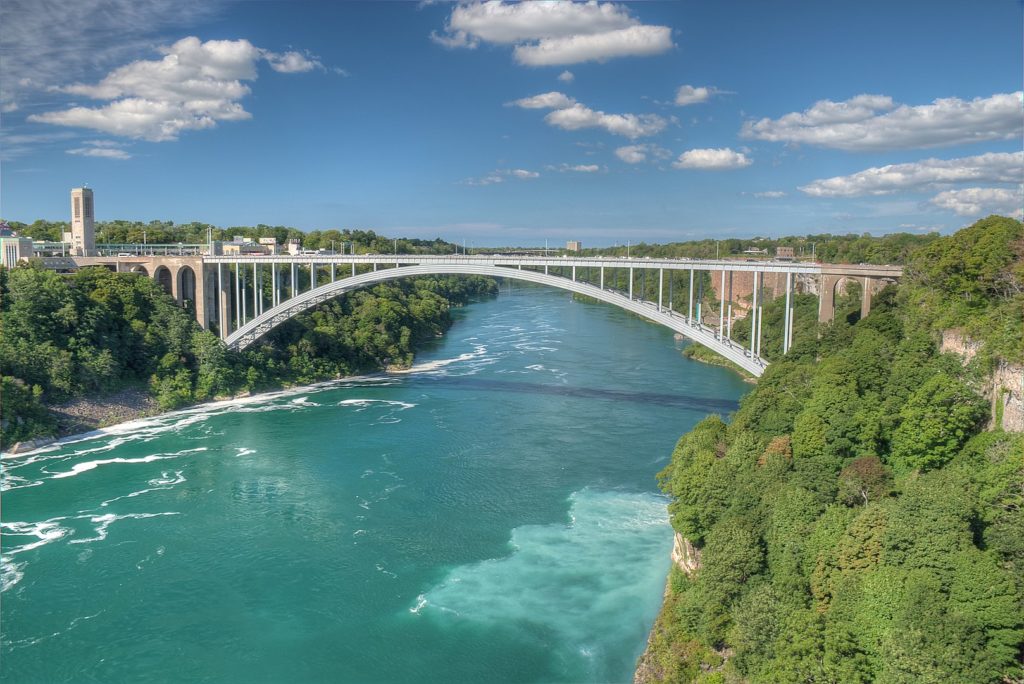
The observation deck of the nearby Skylon Tower offers the highest view of the falls, and in the opposite direction gives views as far as Toronto. Along with the Tower Hotel (built as the Seagrams Tower, later renamed the Heritage Tower, the Royal Inn Tower, the Royal Center Tower, the Panasonic Tower, the Minolta Tower, and most recently the Konica Minolta Tower before receiving its current name in 2010), it is one of two towers in Canada with a view of the falls. The Whirlpool Aero Car, built in 1916 from a design by Spanish engineer Leonardo Torres y Quevedo, is a cable car that takes passengers over the Niagara Whirlpool on the Canadian side. The Journey Behind the Falls consists of an observation platform and a series of tunnels near the bottom of the Horseshoe Falls on the Canadian side.
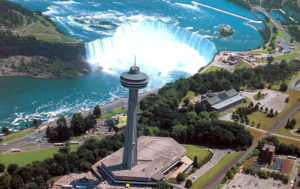
Peak visitor traffic occurs in the summertime when Niagara Falls is both a daytime and evening attraction. From the Canadian side, floodlights illuminate both sides of the falls for several hours after dark (until midnight). The number of visitors in 2007 was expected to total 20 million, and by 2009 the annual rate was expected to top 28 million tourists.
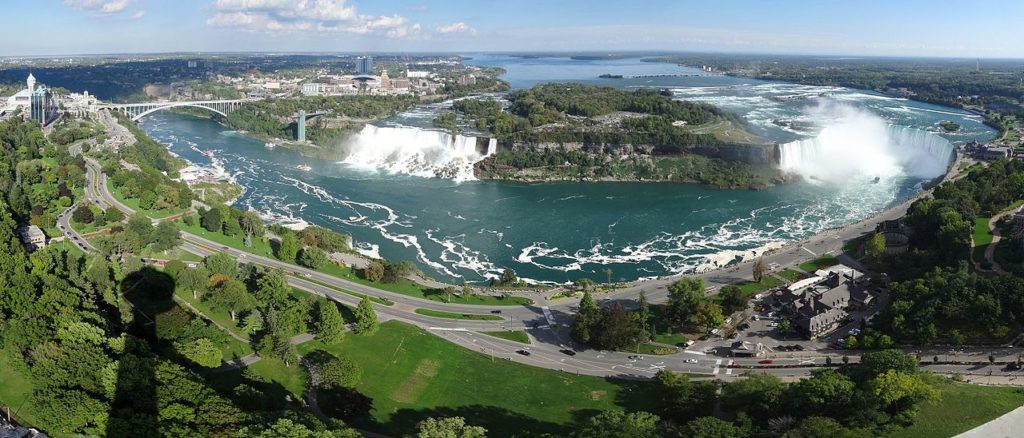
According to Wikipedia





